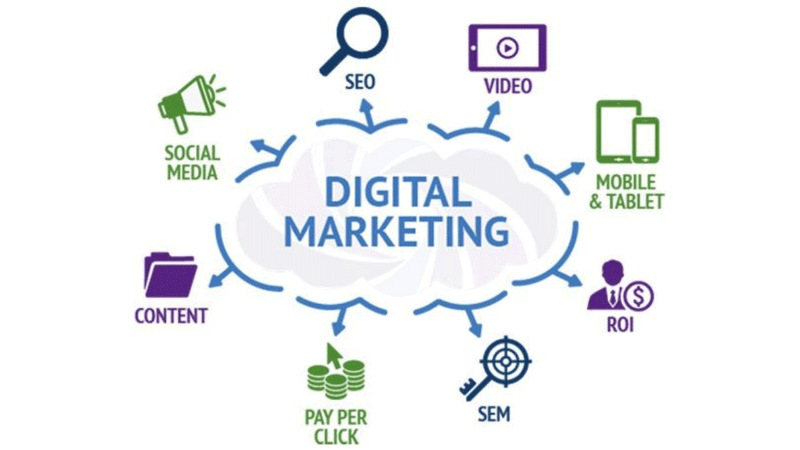Elevate Your Brand Name with The Ad Firm Web Design: Where Innovation Fulfills Performance
Enhance User Experience and Drive Traffic With Responsive Website Design
In today's digital landscape, where customers are accessing websites from a plethora of devices, responsive internet style has come to be much more essential than ever before. With its capacity to adapt and effortlessly adjust to different display sizes, receptive design not just boosts user experience but additionally drives website traffic to your site.
Why Receptive Web Style Matters
Receptive website design is a vital element of modern internet development due to its capability to guarantee ideal customer experience across various gadgets and screen sizes. With the expansion of smartphones, tablets, and various other smart phones, it has come to be essential for internet sites to adapt and supply smooth performance despite the tool being utilized.
The key reason why receptive web layout matters is that it enables individuals to have a pleasurable and constant browsing experience, no matter of the device they are using. A receptive web site immediately adjusts its layout, design, and web content components to fit the display dimension and resolution of the device, making certain that individuals can quickly browse and communicate with the site without any type of aggravation or disappointment.
In addition, responsive internet style additionally plays a considerable duty in search engine optimization (SEO) Online search engine, such as Google, prioritize internet sites that are mobile-friendly and responsive in their search engine result. By including responsive style principles, websites can improve their presence and ranking, leading to increased organic web traffic and potential clients.

Boosting Individual Engagement Through Responsive Layout
Optimizing customer interaction is an essential objective of receptive layout, as it makes sure that individuals can easily access and engage with website web content on any kind of device. With the raising usage of smart devices and tablet computers, it is crucial for sites to adjust to different screen sizes and resolutions. Receptive style allows sites to automatically adjust their format and material to provide a smooth individual experience across gadgets.
Among the main methods receptive layout enhances user interaction is by decreasing tons times. With a receptive website, individuals don't need to wait for different mobile versions to load, leading to faster accessibility to web content. This improved speed causes higher customer fulfillment and encourages them to invest more time on the website.
Additionally, responsive style improves individual involvement by enhancing navigating and user interface (The Ad Firm digital marketing). When an internet site is made responsively, food selections and switches are enhanced for touch interactions, making it simpler for users to navigate and interact with the site on their mobile gadgets. This user-friendly and intuitive experience keeps individuals engaged and urges them to discover even more of the web site
Furthermore, receptive design enables for better content exposure and readability. By adjusting the design and font style dimensions to different devices, responsive web sites make certain that individuals can easily comprehend the web content and check out. This improves customer involvement by decreasing the need for zooming or scrolling to check out the text.
Raising Web Site Web Traffic With Responsive Website Design
With the growing appeal of smart phones, having a website that is responsive to various display sizes and resolutions is crucial for driving increased website traffic. In today's digital landscape, customers are accessing internet sites from a selection of devices such as smart devices, tablets, and home computer. Each of these devices has various display sizes and resolutions, and if your website is not made to adjust to these variations, it can bring about a poor customer experience and a loss of potential web traffic.
Receptive internet design makes certain that your site looks and functions efficiently across all tools. By making use of versatile grids, fluid photos, and media questions, responsive style allows your website to immediately change its navigating, content, and layout to fit any display dimension. This suggests that customers will certainly have a seamless surfing experience regardless of whether they are making use Look At This of a huge desktop or a tiny smart device computer.
Crucial Element of Effective Responsive Design
Reliable receptive layout incorporates several crucial elements that make certain a smooth customer experience across various tools. Among these elements is flexible grids and designs. By utilizing loved one devices like percentages rather than dealt with units like pixels, developers can create designs that scale and adapt to fit different screen sizes. This allows material to be presented in a legible and aesthetically attractive way on any gadget.
Another vital element is media inquiries. These allow developers to use different styles this article and formats based on the characteristics of the individual's tool, such as screen dimension and positioning. By utilizing media questions, designers can enhance the presentation of web content for each and every gadget, ensuring that it is understandable and quickly accessible.
Receptive images are also crucial in effective receptive style. Photos that are as well huge can reduce down web page load times on mobile tools, while photos that are as well little may show up pixelated on larger screens. By utilizing strategies such as responsive picture resizing and lazy loading, developers can ensure that pictures are properly sized and maximized for every tool.
Finally, effective responsive design involves a mobile-first method. This suggests designing and prioritizing content for mobile phones initially, and after that increasing and boosting the layout for bigger displays. This approach guarantees that one of the most essential web content is easily available on smaller sized screens, while still providing a rich experience on bigger devices.
Best Practices for Executing Responsive Website Design
Carrying out responsive website design needs careful consideration of numerous best methods to guarantee an optimum user experience across various gadgets. Here are some essential finest techniques to adhere to when carrying out receptive web layout.
To start with, it is vital to focus on mobile individuals. With the enhancing supremacy of mobile gadgets, designing for mobile-first has actually ended up being essential. Begin deliberately for smaller screens and afterwards gradually improve the layout for bigger displays.

One more essential ideal technique is to enhance pictures for different display resolutions. Big images can reduce the filling time of your website, specifically on mobile phones with slower links. Use responsive pictures that can be resized based on the tool's screen resolution to improve efficiency.
In addition, examination your site on various gadgets and display dimensions to make sure a regular and smooth experience. There are various screening devices offered that can help you identify any issues and make essential adjustments.
Lastly, focus on functionality and access. Ensure that your internet site is easy to navigate, with clear and concise content. Ensure that your site comes to people with handicaps and adheres to accessibility standards.
Final Thought
To conclude, receptive website design plays a critical function in improving user experience and driving website traffic to sites. By embracing responsive layout principles, web sites can make certain optimum watching experiences throughout various tools, causing boosted user involvement (The Ad Firm Carlsbad). Responsive design can additionally add to higher website web traffic as it improves search engine positions and facilitates easy sharing of material. Therefore, organizations ought to concentrate on executing the crucial elements and best practices of responsive layout to efficiently meet the needs of contemporary customers.
Enhancing customer interaction is an essential objective of receptive design, as it makes certain that users can easily accessibility and interact with internet site material on any type of tool. Receptive layout allows sites to automatically adjust their design and web content to supply a seamless customer experience throughout tools.
In addition, receptive style enhances user involvement by improving navigating and customer interface.Receptive pictures are additionally critical in effective responsive layout. By adopting receptive style concepts, websites can ensure optimal watching experiences throughout different devices, leading to raised customer engagement.